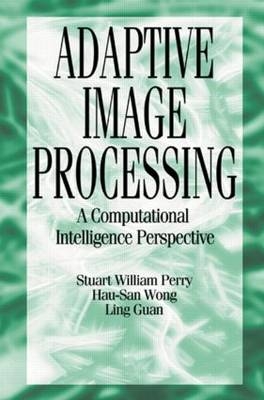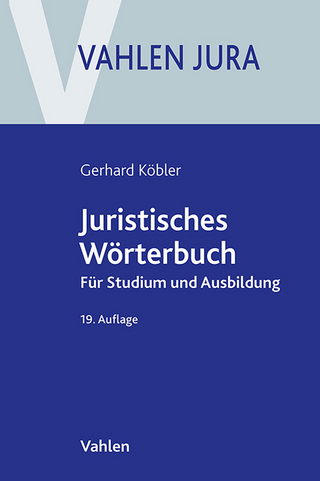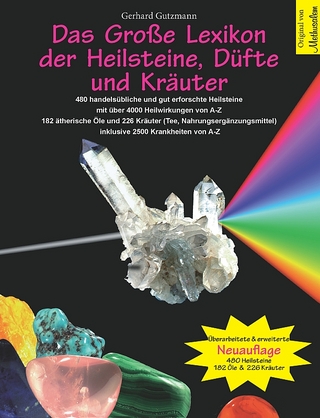
Adaptive Image Processing
Crc Press Inc (Verlag)
978-0-8493-0283-1 (ISBN)
- Titel erscheint in neuer Auflage
- Artikel merken
Adaptive image processing is one of the most important techniques in visual information processing, especially in early vision such as image restoration, filtering, enhancement, and segmentation. While existing books present some important aspects of the issue, there is not a single book that treats this problem from a viewpoint that is directly linked to human perception - until now.
This reference treats adaptive image processing from a computational intelligence viewpoint, systematically and successfully, from theory to applications, using the synergies of neural networks, fuzzy logic, and evolutionary computation. Based on the fundamentals of human perception, this book gives a detailed account of computational intelligence methods and algorithms for adaptive image processing in regularization, edge detection, and early vision.
Adaptive Image Processing: A Computational Intelligence Perspective consists of 8 chapters:
Chapter 1 - Provides material of an introductory nature to describe the basic concepts and current state-of-the-art in the field of computational intelligence for image restoration and edge detection
Chapter 2 - Gives a mathematical description of the restoration problem from the neural network perspective, and describes current algorithms based on this method
Chapter 3 - Extends the algorithm presented in chapter 2 to implement adaptive constraint restoration methods for both spatially invariant and spatially variant degradations
Chapter 4 - Utilizes a perceptually motivated image error measure to introduce novel restoration algorithms
Chapter 5 - Examines how model-based neural networks can be used to solve image restoration problems
Chapter 6 - Probes image restoration algorithms, making use of the principles of evolutionary computation
Chapter 7 - Explores the difficult concept of image restoration when insufficient knowledge of the degrading function is available
Chapter 8 - Studies the subject of edge detection and characterization using model-based neural networks
The first to treat adaptive image processing from a computational intelligence perspective, this work provides an excellent reference in R&D practice to researchers and IT technologists, is most suitable for teaching image processing and applied neural network courses, and will be of equal value for technical managers and executives in industries where intelligent visual information processing is required.
PREFACE
INTRODUCTION
The Importance of Vision
Adaptive Image Processing
The Three Main Image Feature Classes
Difficulties in Adaptive Image Processing System Design
Computational Intelligence Techniques
Scope of the Book
Contributions of the Current Work
Overview of this Book
FUNDAMENTALS OF NEURAL NETWORK IMAGE RESTORATION
Image Distortions
Image Restoration
Neural Network Restoration Algorithms in the Literature
An Improved Algorithm
Analysis
Implementation Considerations
A Numerical Study of the Algorithms
Summary
SPATIALLY ADAPTIVE IMAGE RESTORATION
Introduction
Dealing with Spatially Variant Distortion
Adaptive Constraint Extension of the Penalty Function Model
Correcting Spatially Variant Distortion Using Adaptive Constraints
Semi-Blind Restoration Using Adaptive Constraints
Implementation Considerations
More Numerical Examples
Adaptive Constraint Extension of the Lagrange Model
Summary
PERCEPTUALLY MOTIVATED IMAGE RESTORATION
Introduction
Motivation
A LVMSE-Based Cost Function
A Log LVMSE-Based Cost Function
Implementation Considerations
Numerical Examples
Summary
MODEL-BASED ADAPTIVE IMAGE RESTORATION
Model-Based Neural Network
Hierarchical Neural Network Architecture
Model-Based Neural Network with Hierarchical Architecture (HMBNN)
HMBNN for Adaptive Image Processing
The Hopfield Neural Network Model for Image Restoration
Adaptive Regularization - An Alternative Formulation
Regional Training Set Definition
Determination of the Image Partition
The Edge-Texture Characterization (ETC) Measure
The ETC Fuzzy HMBNN for Adaptive Regularization
Theory of Fuzzy Sets
Edge-Texture Fuzzy Model Based on ETC Measure
Architecture of the Fuzzy HMBNN
Estimation of the Desired Network Output
Fuzzy Prediction of Desired Gray Level Value
Experimental Results
Conclusion
ADAPTIVE IMAGE REGULARIZATION USING EVOLUTIONARY COMPUTATION
Introduction
Introduction to Evolutionary Computation
The ETC-pdf Image Model
Adaptive Regularization Using Evolutionary Programming
Experimental Results
Other Evolutionary Approaches for Image Restoration
Summary
BLIND IMAGE DECONVOLUTION
Introduction
Computational Reinforced Learning
Soft-Decision Method
Simulation Examples
Conclusions
EDGE CHARACTERIZATION USING MODEL-BASED NEURAL NETWORKS
Introduction
MBNN Model for Edge Characterization
Network Architecture
Training Stage
Recognition State
Experimental Results
Summary
| Erscheint lt. Verlag | 21.12.2001 |
|---|---|
| Reihe/Serie | Image Processing Series |
| Zusatzinfo | 34 Halftones, black and white; 81 Illustrations, black and white |
| Verlagsort | Bosa Roca |
| Sprache | englisch |
| Maße | 156 x 235 mm |
| Gewicht | 572 g |
| Themenwelt | Schulbuch / Wörterbuch ► Lexikon / Chroniken |
| Medizin / Pharmazie | |
| Naturwissenschaften ► Chemie | |
| Technik | |
| ISBN-10 | 0-8493-0283-8 / 0849302838 |
| ISBN-13 | 978-0-8493-0283-1 / 9780849302831 |
| Zustand | Neuware |
| Haben Sie eine Frage zum Produkt? |
aus dem Bereich



